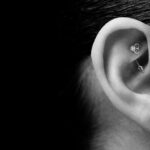In the fast-paced world of technology, staying ahead is crucial. One intriguing gadget that has gained prominence recently, particularly with the rise of remote work, is the USB mouse jiggler. These devices keep computers active by simulating mouse movements, preventing sleep mode or an “inactive” status on various applications. While this can be beneficial for remote workers, it raises concerns for employers who need to monitor productivity. This article explores how to detect USB mouse jigglers, providing insights into their functionality, detection methods, and the broader implications for workplace monitoring.
What is a USB Mouse Jiggler?
A USB mouse jiggler is a small device, often resembling a flash drive, that plugs into a computer’s USB port. Its primary function is to simulate mouse movement, keeping the computer active. This prevents the system from entering sleep mode and keeps status indicators like “away” or “inactive” from appearing in communication apps.
Why Use a Mouse Jiggler?
Mouse jigglers are popular among remote workers who want to ensure their computers remain active during periods of inactivity. They are also used in scenarios where long-running processes should not be interrupted by sleep mode.
Types of Mouse Jigglers
- Hardware-Based Mouse Jigglers: These are physical devices that connect to a USB port and create random cursor movements.
- Software-Based Mouse Jigglers: These are applications installed on the computer that simulate mouse activity.
The Rise of Remote Work and Mouse Jigglers
Remote Work Trends
The shift to remote work has led to an increase in the use of mouse jigglers. As employees work away from direct supervision, there is a greater need to keep computers active and maintain an “available” status in communication tools.
Monitoring Remote Employees
Employers often use monitoring software to track productivity and ensure work is being completed efficiently. Mouse jigglers can interfere with these systems by artificially indicating activity.
How Mouse Jigglers Work
Simulating Mouse Activity
Mouse jigglers generate random movements of the cursor. This activity is usually minimal and designed to be imperceptible to the user while still preventing the computer from entering sleep mode.
Hardware vs. Software Jigglers
- Hardware Jigglers: These devices are plug-and-play and do not require software installation. They are typically more difficult to detect.
- Software Jigglers: These applications run in the background and simulate mouse activity. They are easier to detect since they interact directly with the operating system.
Detecting USB Mouse Jigglers
Challenges in Detection
Detecting mouse jigglers can be challenging, especially for hardware-based devices that do not leave a significant footprint on the system. However, there are several methods and tools that can help identify the presence of these devices.
Monitoring Unusual Cursor Activity
One of the simplest ways to detect a mouse jiggler is to monitor the cursor’s movement for patterns of random activity. Unexplained, repetitive, or continuous movements can indicate the presence of a jiggler.
USB Device Monitoring Tools
Sysinternals Suite
The Sysinternals Suite, provided by Microsoft, includes tools like “Process Monitor” that can help detect unusual activity from connected USB devices.
USBDeview
USBDeview is a third-party application that lists all USB devices connected to a computer. It can help identify unfamiliar or suspicious devices that might be mouse jigglers.
Analyzing System Logs
Operating systems maintain logs of connected USB devices. By analyzing these logs, you can identify new or unusual devices connected to the computer.
Implementing Endpoint Security Solutions
Advanced endpoint security solutions can detect and block unauthorized USB devices. These tools provide real-time monitoring and can alert administrators to the presence of suspicious hardware.
Behavioral Analysis
Monitoring software can be configured to detect unusual patterns of activity that are consistent with the use of a mouse jiggler. For example, continuous cursor movement during periods when the user is known to be inactive.
Preventing and Mitigating the Use of Mouse Jigglers
Establishing Clear Policies
Organizations should establish clear policies regarding the use of unauthorized hardware and software. Employees should be informed about the implications of using mouse jigglers and the potential consequences.
Regular Audits and Inspections
Regular audits of connected devices and system logs can help identify unauthorized hardware. Periodic inspections of employee workstations can also deter the use of mouse jigglers.
Educating Employees
Educating employees about the importance of productivity and the risks associated with using mouse jigglers can reduce their prevalence. Emphasizing trust and accountability in the workplace can foster a more transparent work environment.
Ethical Considerations
Balancing Monitoring and Privacy
While detecting mouse jigglers is important for maintaining productivity, it is essential to balance monitoring with respect for employee privacy. Overly intrusive monitoring can lead to a negative work environment and reduced employee morale.
Trust and Transparency
Building a culture of trust and transparency is crucial. Employers should communicate openly about the reasons for monitoring and the methods used, ensuring employees understand the importance of productivity and accountability.
Conclusion
Detect USB mouse jigglers is a nuanced process that requires a combination of monitoring tools, system analysis, and employee education. As remote work continues to rise, the use of Detect USB Mouse Jigglers is likely to become more common, making it essential for employers to stay vigilant. By implementing robust detection methods and fostering a culture of trust, organizations can ensure productivity while respecting employee privacy. Balancing these factors is key to maintaining a healthy and efficient remote work environment.







